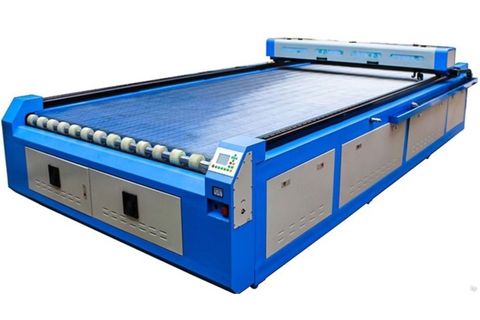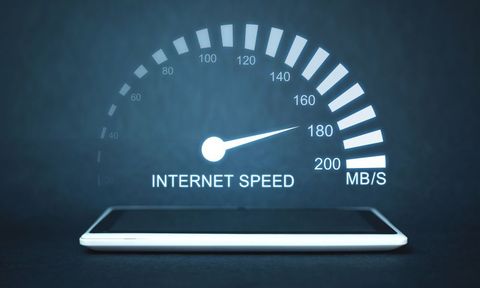Understanding OTDR Testers: A Comprehensive Guide for Fiber Optic Network Testing
An Optical Time Domain Reflectometer (OTDR) is a specialized testing instrument used to evaluate the performance and integrity of fiber optic cables. It works by sending pulses of light through a fiber and measuring the reflections generated along its length. These reflections reveal information about issues such as breaks, bending losses, splicing points, and signal attenuation.
OTDR technology exists because fiber optic networks require accurate, non-intrusive, and efficient methods of verification. As digital infrastructure expands, the need for reliable optical network diagnostics, fiber optic testing equipment, and precise fault-location tools has become essential. The OTDR simplifies complex analysis and helps technicians understand the physical health of a fiber link without disconnecting or disrupting the network.
OTDR testing is used across multiple areas of connectivity, including broadband networks, data centers, smart infrastructure, telecommunications, and enterprise networking. It plays a major role in ensuring that fiber deployments support high-bandwidth applications such as cloud computing, video streaming, 5G backhaul, and industrial connectivity.
The Importance
OTDR testers matter today because fiber networks have become the backbone of modern communication systems. As demand increases for faster and more reliable internet, accurate fiber troubleshooting and network validation are essential. OTDRs solve several challenges faced by network operators, engineers, and installers:
-
Detecting physical faults in buried or aerial fiber
-
Verifying link quality during installation or upgrades
-
Maintaining service reliability in high-traffic environments
-
Supporting long-distance backhaul for 5G and FTTH deployments
-
Ensuring compliance with quality benchmarks and optical power standards
The tool benefits a wide audience, including:
-
Telecom providers
-
Internet service operators
-
Data center engineers
-
Enterprise IT teams
-
Infrastructure planners
-
Optical fiber installers and maintenance professionals
By offering insights into splice loss, connector issues, and fiber attenuation, OTDRs help prevent outages, reduce downtime, and maintain network performance. This contributes to better digital access, smoother communication, and improved service reliability for millions of users.
Recent Updates
OTDR technology has seen notable advancements over the past year as global connectivity demands grow. Several key developments include:
1. Greater use of high-resolution OTDR modules
Manufacturers are producing devices with enhanced dynamic range and shorter dead zones, allowing more accurate detection of closely spaced events such as connectors and micro-bends.
2. AI-supported analysis tools for network diagnostics
New OTDR software platforms now offer automated event detection, intelligent mapping, and cloud-based reporting. These features help reduce manual interpretation errors and speed up testing workflows.
3. Increased adoption of handheld OTDR testers
Lightweight, portable testers are becoming standard for field teams working on FTTH rollouts, 5G deployments, and outdoor fiber installations.
4. Growth in PON-optimized OTDR testing
Passive Optical Networks require high-precision measurement tools. Updated OTDRs now support multiple wavelengths and enhanced filtering to accurately test multi-split fibers used in FTTH systems.
5. Rising demand due to smart city and 5G expansion
Countries expanding fiber-to-home and fiber-to-tower connectivity are integrating OTDR testing into every stage of deployment to ensure long-term reliability.
These updates highlight the growing importance of OTDRs in modern network engineering and maintenance practices.
Laws or Policies
Fiber optic testing, including OTDR use, is influenced by national standards, safety rules, and telecom regulations. These guidelines help ensure the reliability of optical infrastructure and promote consistent installation and testing practices.
Common policy areas influencing OTDR testing include:
Telecom Regulatory Standards
Many countries follow or adapt international standards for optical fiber testing, such as:
-
ITU-T G.652 / G.657 for fiber classification
-
IEC 61280 for fiber measurement procedures
-
ISO/IEC 14763 for structured cabling testing
These standards define how fiber optic networks should be measured, documented, and maintained.
Government Broadband Programs
Nations investing in nationwide fiber expansion require accurate testing before approving network segments. OTDR certification reports are often mandatory for network acceptance.
Safety and Handling Regulations
Rules usually cover:
-
Laser safety for optical instruments
-
Proper handling of fiber shards
-
Secure field testing procedures
Infrastructure Quality Compliance
Large-scale fiber projects in transportation, defense, public utilities, and smart city networks often require formal OTDR documentation as part of quality assurance.
These regulations ensure that networks meet performance benchmarks and are suitable for use in critical communication systems.
Tools and Resources
Several tools, reference guides, and digital resources help technicians and learners better understand OTDR testing and fiber optic diagnostics. These include:
Online Tools & Calculators
-
Fiber attenuation calculators
-
Distance-to-fault estimators
-
Optical power budgeting tools
-
Link loss prediction tools
-
Fiber bend radius calculators
Training Resources
-
Fiber optic certification programs
-
OTDR interpretation tutorials
-
Interactive fiber testing simulators
Technical References & Guides
-
Optical network design manuals
-
Standardized testing procedure documents
-
Fiber optics troubleshooting guides
-
Event analysis charts and wavelength comparison sheets
Useful Platforms & Websites
-
Global telecom standards organizations
-
Network infrastructure knowledge bases
-
Fiber testing documentation templates
-
Optical measurement knowledge repositories
Common OTDR-Related Tools Used in Field Testing
-
Light sources and power meters
-
Visual fault locators
-
Optical fiber inspection scopes
-
Patch cords and cleaning tools
-
Fusion splicer logs for cross-verification
These resources support accurate, safe, and efficient optical network diagnostics, making them valuable for both beginners and experienced professionals.
Frequently Asked Questions
1. What is the primary use of an OTDR?
An OTDR is mainly used to analyze the integrity of fiber optic cables. It measures distance, loss, reflections, and event points such as splices and connectors. This helps technicians identify faults, verify new installations, and assess long-term fiber performance.
2. How does an OTDR differ from a power meter and light source?
A power meter measures the total optical power passing through a fiber, while a light source provides a stable signal for loss testing. An OTDR, on the other hand, provides a fiber “trace,” giving detailed information about individual events along the cable rather than a single end-to-end value.
3. Can an OTDR test live fiber links?
Some advanced OTDRs include filtered wavelengths that allow safe testing of active passive optical networks. However, it is typically recommended to test fibers when they are not carrying live traffic to avoid interference or inaccurate readings.
4. What is a dead zone in OTDR testing?
A dead zone is the minimum distance after an event where the OTDR cannot accurately measure another event. Updated OTDRs now feature improved dead-zone performance, allowing closer event identification.
5. Do all fiber types require the same OTDR settings?
No. Different fibers (such as G.652, G.657, or multimode) require specific wavelength selections, pulse widths, and testing parameters. Proper configuration ensures accurate interpretation.
Conclusion
OTDR testers play an essential role in ensuring high-quality fiber optic networks. By delivering accurate diagnostics, event analysis, and fault location data, they help maintain reliable communication systems that support essential digital applications. Recent advancements in resolution, software intelligence, and PON compatibility have made OTDR testing more efficient and accessible.
As global fiber deployment expands, OTDR tools and best-practice testing procedures will remain central to network evaluation, long-term maintenance, and optical performance assurance. Understanding how these instruments work and how they support fiber optic infrastructure helps both professionals and learners navigate the rapidly growing world of high-speed connectivity.





